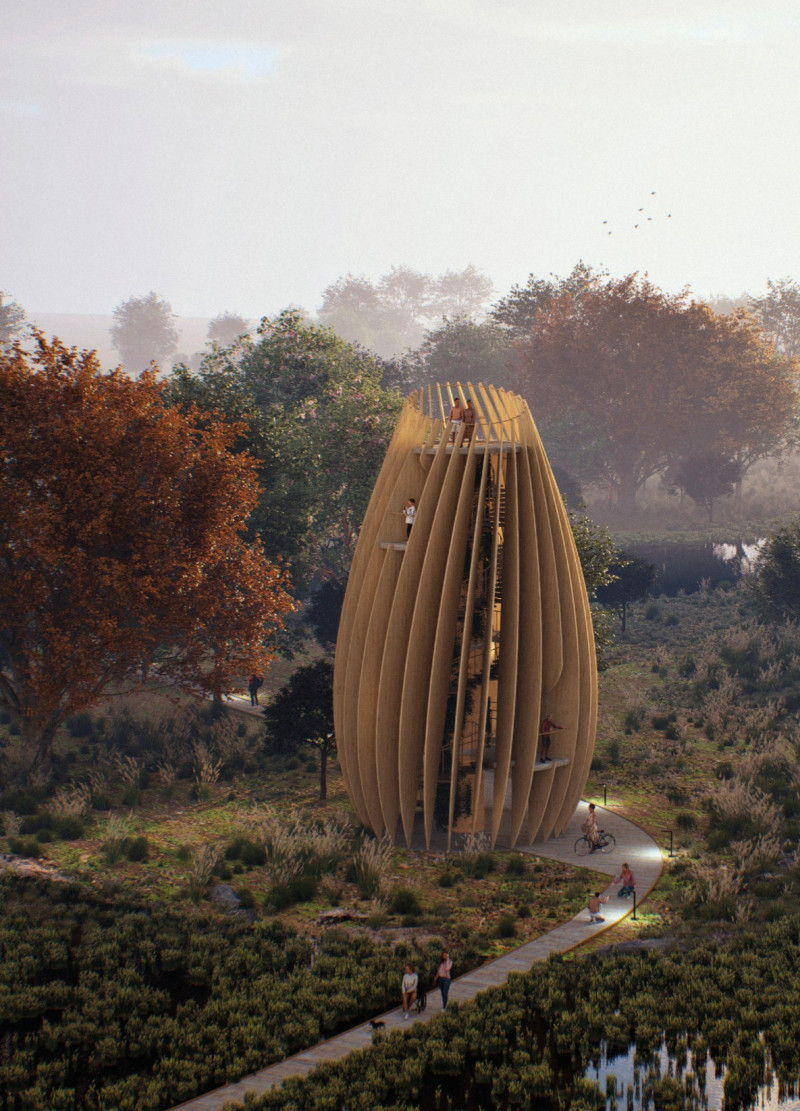5 key facts about this project
This project represents a fusion of modern architectural ideas and traditional elements, creating a dialogue between past and present. The design prioritizes accessibility and inclusivity, ensuring that all community members can engage with the space. This approach is evident in the building's layout, which features open spaces and a fluid circulation path, encouraging interaction and engagement.
Key aspects of the project include a well-defined entrance that acts as a gateway to various functions within the building. The façade showcases a harmonious blend of materials, including glass, steel, and locally sourced stone, each carefully selected to enhance the building's dialogue with its surroundings. The use of large windows not only fosters a connection between indoor and outdoor environments but also allows the natural light to permeate the interior, reducing the reliance on artificial lighting and thereby enhancing energy efficiency.
The interior layout is designed with flexibility in mind, allowing for multiple uses of various spaces. Movable partitions can reconfigure rooms for events, meetings, or educational purposes, showcasing the project’s adaptability to changing needs. This flexibility is complemented by sustainable design strategies, such as green roofs and rainwater harvesting systems, which reduce water runoff and promote biodiversity. The implementation of these features underscores the commitment to sustainability and environmental responsibility, characteristics that are becoming increasingly significant in modern architecture.
Unique design approaches are evident throughout the project, particularly in the incorporation of local materials and construction techniques that reflect the cultural identity of the area. These choices not only support the local economy but also emphasize the importance of community in the architectural narrative. The integration of art installations from local artists enhances the overall experience of the space, further rooting the project in its cultural context.
Landscaping plays a pivotal role in linking the architecture to its environment. Thoughtfully designed outdoor areas invite users to enjoy the surroundings, while also serving as extensions of the interior spaces. These outdoor settings promote relaxation and social interaction, reinforcing the project’s role in fostering community connections.
In terms of architectural plans and sections, they reveal a meticulously considered design that prioritizes natural ventilation and thermal comfort. This project showcases a keen understanding of the principles of sustainable architecture, emphasizing the importance of both aesthetics and functionality. The design outcome is a space that not only meets the needs of its users but also contributes positively to its urban context.
The overall narrative of the project is one of inclusivity, sustainability, and cultural reflection. The architectural decisions made throughout the design process align closely with the community's values and aspirations, making this an exemplary model of contemporary architecture. Readers are encouraged to explore the architectural plans, sections, and detailed designs to gain deeper insights into the innovative ideas and thoughtful strategies that make this project a noteworthy contribution to modern architectural practice. By examining these elements, one can appreciate the careful balance between aesthetic appeal and functional design that this project represents.


























